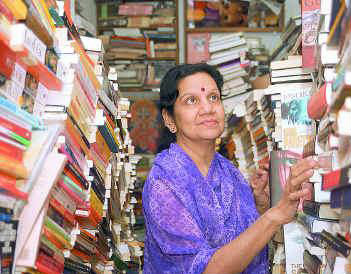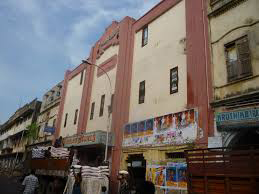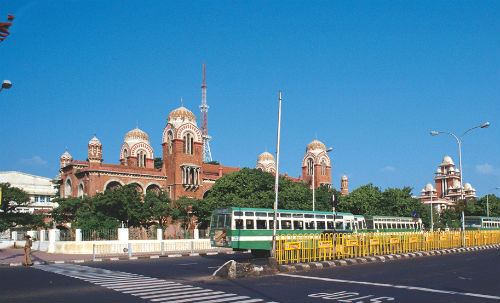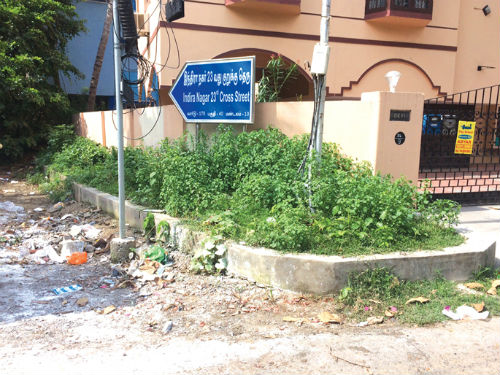Registered with the Registrar of Newspapers for India under R.N.I 53640/91
Vol. XXVII No. 13, October 16-31, 2017
Archives: Vol. XXVII No. 13, October 16-31, 2017
High Court shows way on heritage
By The Editor
In the last two years or so, the High Court of Madras has embarked on some very commendable initiatives by way of showcasing its heritage. Its museum, started in a small way a decade back, moved into new premises a few days ago, when the entire campus celebrated its 125th year. The entire building is undergoing maintenance and restoration, and its collection of art is being catalogued. The second lighthouse of the city, located at one end of the premises, has been restored and a photo-gallery has been set up in its base. Several Presidency Magistrate’s courts in the city are being put through very rigorous conservation.
If all of this is not commendable enough, the Court, by throwing open its premises for heritage walks, has shown that its heart is in the right place. Not only has this encouraged heritage enthusiasts and lovers of history to visit the campus, it also brings the entire precinct much closer to the residents of the city and tourists. The tour, in place for over a year now, is seeing numbers pick up and, what’s more, has created a sense of pride in the staff of the court. True, the tour is held sporadically, but with some better marketing efforts there can be no doubt that it will soon become a regular feature.
This is really a remarkable achievement, one that other Government bodies with historic premises would do well to emulate. Take for instance the assembly and secretariat building at Fort St George. Or for that matter the King’s Barracks in the same premises. What prevents the Government/Army (who respectively control the two structures) from training a few of the staff and have them conduct tours on Sundays when the whole Fort is emptied of normal activity? Why can’t the University of Madras do the same with the Senate House campus? The Presidency College could similarly take a leaf out of the High Court’s book and encourage visitors with students taking them around the place. The same applies to Queen Mary’s College as well. We could even extend this a little further and have the GPO, the State Bank of India buildings (Rajaji Salai, Anna Salai and Anderson Road), the Bharat Insurance Building (if and when restored that is), Ripon Building and VP Hall offer such an experience. If only all of this were to happen, what a dynamic city Chennai would be, at least as far as heritage was concerned!
The world over, tours of historic premises are a sure way of ensuring public interest and also upkeep of the property. Somehow in Chennai this has never caught on. The closest you can get to a heritage building is its front gate and, more often than not, a security guard or two will swoop down on you and prevent you from even taking a photograph. This Masonic secrecy is most unwarranted. It also reinforces the commonly held view that most of these premises are badly maintained and so visitors are discouraged from taking photographs out of fear that these would be made public.
There is one other technique that we specialise in as well. In the outside chance of a heritage building being restored, the only use it is put to is that of a museum, and not a very well kept or presented one at that. It is high time that this is given up. What people are looking for today are experiential tours, of living and thriving campuses. It would be good if some of the architectural masterpieces of Chennai are thrown open for heritage tours, just as the High Court has done.
Where are our bookstores now?
by V. Ramnarayan
Vanishing in Madras

Giggles in the Connemara
Many, many bookstores have disappeared from our cities in the last decade or so.
Landmark is a shadow of itself, a landmark name remaining in one location only. Odyssey is still around, doing apparently good business, only because new life has been breathed into it. The Huffington Post has a breezy take on the situation. An article in it says: “Not a good time for books, is it? And by books 1 mean those quaint glue-bonded, ink-on-paper pages that adorn whatever book shelves you still have. Bye-bye Gutenberg. Hello Kindler!”
“I know every book of mine by its smell, and I have but to put my nose between the pages to be reminded of all sorts of things.” – George Robert Gissing (1857 to 1903).
Where lovers once met…

The Minerva Theatre.
Long ago in Madras, when even basic mobiles were yet to ring a bell, the young who had fallen in love head over heels, an act for which gravitation was not to be held responsible going by Albert Einstein’s witticism, theatres, libraries, ice cream parlours, beaches and such offered the opportunity for cooing and billing.
Arguably, three topped the list of popular trysting places: Minerva theatre in Broadway, Elphinstone cinema house on Mount Road, and Blue Diamond theatre near Gemini Circle. Elphinstone, rather, the New Elphinstone, offered, as bonus, Jafar’s
From India’s Digital Archives – 4
Karthik Bhatt
Towers of higher education

The University of Madras was established by an Act of the Legislative Council of India dated September 5, 1857. It had its genesis in what was known as the ‘Magna Carta of English Education in India’, Wood’s Despatch of 1854. Similar institutions were established in Bombay and Calcutta.
The Despatch, a seminal documentation on education in India, recommended several measures to promote and administer education in the country, such as the establishment of a Department of Public Instruction in each Presidency and the establishment of schools


